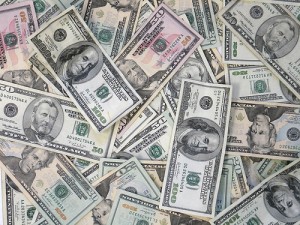
The net forex inflow into the Philippines is seen to exceed initial estimate of $6.7 billion by yearend due to more “hot money” entering the country and robust remittances.
The net inflow of foreign exchange into the country is expected to top the initial estimate of $6.7 billion by the end of the year as developments offshore led to a higher-than-expected entry of “hot money” and robust growth in remittances.
The Bangko Sentral ng Pilipinas said the forecast of a $6.7-billion surplus in the country’s balance of payments (BOP) for 2011 would likely be raised to consider the latest data on foreign exchange inflows.
“We are reviewing the projection to take into account developments over the past months,” BSP Governor Amando Tetangco Jr. told reporters.
This year, remittances remained strong despite the lingering crisis in the eurozone and the weak economy of the United States because of the increasing demand for Filipino workers in alternative, foreign labor markets.
Fiscal and economic problems in the West have also prompted foreign portfolio fund owners to shift their money to emerging Asian markets such as the Philippines where growth outlook was much better.
According to the latest report on the BOP, the net inflow of dollars and other foreign currencies into the Philippines amounted to $9.7 billion as of end-September.
The BSP said a net inflow that was higher than the initial estimate could be sustained throughout the rest of the year as the combined amount of remittances, foreign investments, export earnings and foreign loans would continue to outstrip spending for imports and debt servicing.
The BOP is the difference between inflows and outflows of foreign exchange to and from the country. Inflows this year are driven by remittances from overseas Filipinos and foreign portfolio investments.
A surplus in the BOP increases the country’s total reserve of foreign exchange, or the gross international reserves (GIR), which indicates a country’s capability to pay for imported goods and services and to service its debts to foreign creditors.
The latest report on the GIR showed that it stood at $75.8 billion as of end-October, enough to cover 11.2 months’ worth of the country’s usual imports. The amount was also 6.4 times the country’s foreign currency-denominated debts maturing within a year.
“The GIR could hit at least $76 billion [by the end of the year],” Tetangco said. Such an amount of GIR would be a record high.
Strong inflows of foreign currencies into the country this year are credited for helping improve the country’s creditworthiness.
The central bank said the rising BOP surplus and GIR helped the country win the favor of the international financial community, which now sees the Philippines as being more capable to service its liabilities to foreign creditors and investors.
So far this year, the Philippines got a lift in its credit ratings. Moody’s Investors Service upgraded its rating for the country from three to two notches below investment grade, while Fitch raised its rating from two notches to just a notch below investment grade.